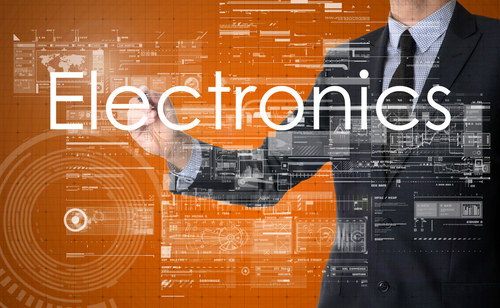National Strategy for Electronics Stewardship—Resources
 |
The electronic devices and equipment we use all day every day at work and at play represent a huge challenge when it comes to ensuring these products do not end up in a landfill. For businesses of every size, however, the federal government is working toward making it both easier and more fool proof to recycle electronics safely and appropriately. Here are a few of the programs planned or in place to help:
Certification of U.S. electronic recyclers and refurbishers is currently provided by two programs, R2 and e-Stewards®, helping to ensure electronics waste is safely managed. As noted yesterday, the voluntary adoption of certification by the electronics recycling and refurbishing industry has been hugely successful, with an increase of more than 360 percent since 2011. In the United States, 45 states now have certified facilities in operation and 16 countries worldwide also have certified facilities. To make sure these two programs’ standards are implemented transparently and consistently and are achieving the desired results, the Environmental Protection Agency (EPA), Government Services Administration (GSA), and ANSI-ASQ National Accreditation Board (ANAB) are currently studying the programs, including interviewing key stakeholders, observing facility audits, and documenting findings and recommendations for improvement.
Need an answer fast? Relax. Our editors guarantee a personalized response to your questions within 3 business days. Take a free trial of Enviro.BLR.com and see what everyone is talking about. For a limited time, also receive a free 2014 EHS Salary Guide. Download Now.
Going forward, the GSA is also working with other federal agencies to develop criteria to evaluate and determine which standards to use for companies that want to manage the federal government’s used electronics. The EPA is drafting criteria for environmental aspects, while other agencies will address such things as worker health and safety and data security.
To help locate certified refurbishers and recyclers, the EPA developed an interactive map that combines information from the R2 and e-Stewards programs at http://www.epa.gov/epawaste/conserve/materials/ecycling/certmap.htm.
The Sustainable Materials Management (SMM) Electronics Challenge, which was launched in September 2012, is another program established to aid businesses. In this program, electronics manufacturers and retailers commit to a number of requirements regarding electronic equipment management, including:
- Sending 100% of the used electronics they collect from the public, businesses, and within their own organizations to certified electronics refurbishers and recyclers,
- Offering electronics collection programs that use R2 and e-Stewards-certified recyclers to the public;
- Increasing the amount of used electronics collected and recycled; and
- Posting public information on collection programs and recycling data.
Everything You Need for Environmental Compliance
Enviro.BLR.com puts everything you need at your fingertips, including practical RCRA, CAA, CWA, hazardous waste regulatory analysis and activity, news, and compliance tools. Try it at no cost or risk and get a FREE report.
As of August 2014, the following companies are participating in the SMM Electronics Challenge:
- Best Buy Company
- Dell, Inc.
- LG Electronics USA, Inc.
- Nokia Corporation
- Panasonic Corporation
- Samsung Electronics Company
- Sony Electronics, Inc.
- Sprint Nextel Corporation
- Staples, Inc.
Reducing the harm that U.S. electronics cause when exported to third-world countries is another aspect of the NSES that is aimed at “building a global capacity for used electronics, whether it be domestically generated or imported from other countries.” According to the U.S. International Trade Commission, “U.S. organizations reported $20.6 billion in total sales of used electronics in 2011, composed of $19.2 billion of domestic sales and U.S. exports totaling $1.45 billion, or 7 percent of total sales.”
Working with other countries and international agencies, the federal government is beginning to get a better picture of the flow of electronic wastes on a global scale, and is also cooperatively helping to build recycling and refurbishing training sessions and to assess facilities in other countries to help them operate safely and use environmentally sound management practices. One of the most important steps the EPA has taken is the recent revision to the cathode-ray tube (CRT) regulations published on June 26, 2014. The revisions clearly define the term “CRT exporter” and will not only improve export requirements for CRTs intended for reuse and recycling but will also help the EPA track exports by requiring more information.
